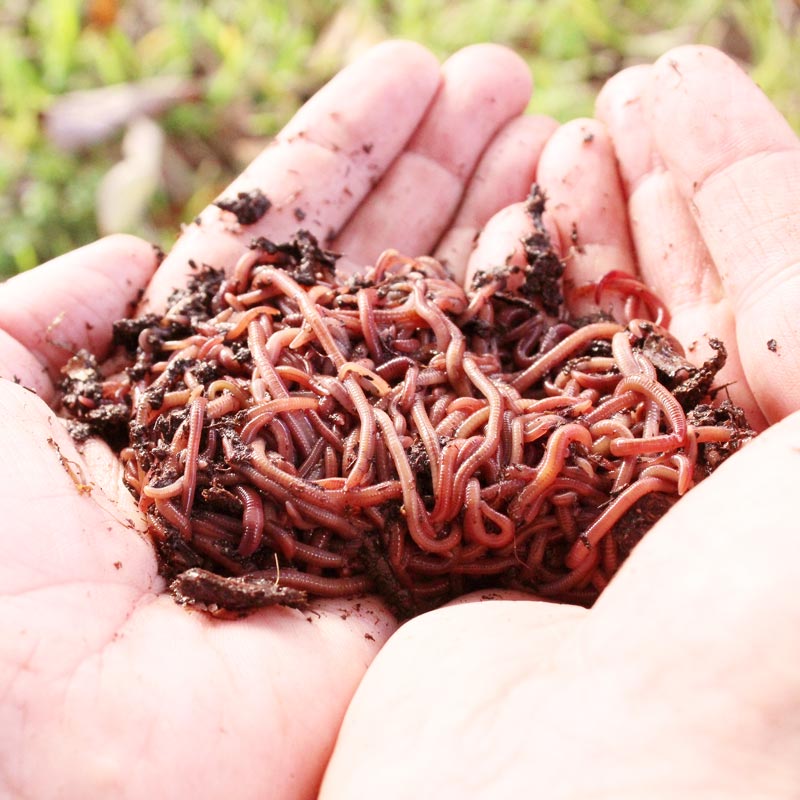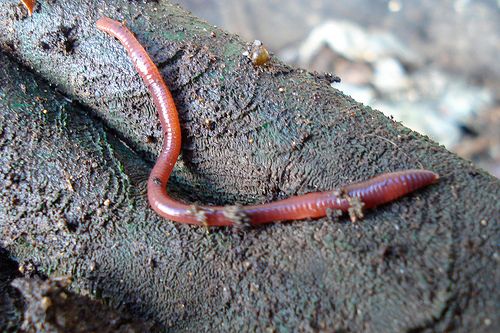Choose Lake Hickory Bait for Fresh Worms, Tackle, and More
Choose Lake Hickory Bait for Fresh Worms, Tackle, and More
Blog Article
Red Wigglers 101: Whatever You Need to Know for Thriving Gardens
Red wigglers, or Eisenia fetida, play a vital duty in sustainable horticulture methods, working as effective decomposers that convert organic waste into valuable vermicompost. Understanding their habitat, dietary preferences, and the myriad advantages they supply can change your horticulture approach (Red Wiggler Express). As these worms flourish in certain conditions, their care and monitoring are crucial for optimizing their contributions to soil health. The concern continues to be: what steps can you take to harness the complete potential of these remarkable organisms in your own yard?
Recognizing Red Wigglers

Red wigglers thrive in atmospheres abundant in organic material and dampness. Red Wiggler Express. They have a special digestive system that allows them to process food scraps quickly, secreting spreadings that are packed with crucial nutrients such as nitrogen, phosphorus, and potassium. These castings enhance dirt framework, boost water retention, and foster beneficial microbial activity, all of which add to durable plant wellness
Moreover, red wigglers can survive in diverse conditions, making them adaptable to numerous gardening methods, consisting of indoor and outside composting systems. Their ability to consume big amounts of natural waste everyday positions them as useful allies for both home gardeners and commercial cultivators. By incorporating red wigglers into horticulture efforts, one can dramatically improve dirt fertility and support lasting gardening methods.
Ideal Environment for Red Wigglers
Developing an ideal atmosphere for red wigglers is important for optimizing their composting abilities and overall health and wellness. Red wigglers thrive in wet, dark, and well-aerated habitats, which closely resemble their native environments in leaf litter and rotting raw material. An appropriate habitat ought to supply a temperature range between 55 ° F and 77 ° F(13 ° C to 25 ° C), as extreme temperature levels can emphasize or damage the worms.
The bedding material, such as shredded paper, cardboard, or coconut coir, must be maintained moist however not overly wet, as extreme dampness can bring about anaerobic conditions damaging to worm health. Furthermore, a pH degree between 6.0 and 7.5 is perfect, ensuring a well balanced environment.
Correct aeration is equally vital; it permits oxygen blood circulation and protects against the build-up of harmful gases. A container or container created for vermicomposting should have drain openings to get rid of excess wetness and promote airflow. Normal monitoring of these conditions is essential for keeping a prospering red wiggler population, inevitably enhancing their effectiveness in damaging down natural waste and enriching yard dirt.
Dietary Needs and Preferences

Red wigglers exhibit particular preferences; they are particularly keen on softer, decaying products over tougher or even more coarse compounds. It is crucial to avoid feeding them citrus peels, onion, and garlic in large quantities, as these can be harmful. Additionally, meat, dairy products, and oily foods should be left out, as they can bring in parasites and create unpleasant smells.
(Lake Hickory Bait)To maintain optimal health and wellness, a well balanced mix of green and brownish products is advised. Environment-friendly products, such as veggie scraps, provide nitrogen, while brown products, like cardboard and dried out fallen leaves, supply carbon. Checking the wetness content and guaranteeing a regular food supply will further improve their development and composting capabilities. By satisfying their nutritional demands, gardeners can foster a growing population of red wigglers in their garden compost systems.
Advantages of Utilizing Red Wigglers
The exceptional benefits of utilizing red wigglers in horticulture prolong far beyond their role in composting. These versatile microorganisms contribute substantially to soil health and wellness, boosting nutrition availability and promoting microbial task. By freshening the soil as they delve, red wigglers enhance drainage and origin penetration, developing an optimum atmosphere for plant growth.
In addition, red wigglers are reliable recyclers of organic waste, transforming it into nutrient-rich spreadings that offer as an outstanding natural plant food. These castings consist of useful bacteria and important nutrients, such as nitrogen, phosphorus, and potassium, which are important for plant development. The slow-moving release of nutrients from worm spreadings makes sure a steady supply, minimizing the danger of nutrient leaching and advertising lasting gardening techniques.
Making use of red wigglers fosters a much more sustainable horticulture method by lowering reliance on chemical fertilizers and promoting a closed-loop system, where waste is transformed into important resources. Generally, integrating red wigglers right into horticulture practices offers a multitude of eco-friendly and agricultural advantages.
(Granite Falls NC Worms For Sale)
Composting With Red Wigglers

To initiate an effective vermicomposting system, pick an appropriate container with appropriate air flow and water drainage. The optimal environment for red wigglers includes a wet, dark setting with temperature levels between 55 ° F and 77 ° F. Begin by layering shredded paper, cardboard, and food scraps, making certain a balanced mix of carbon and nitrogen-rich products.
Red wigglers grow on veggie peels, fruit scraps, coffee grounds, and eggshells, while Charlotte NC Worms For Sale avoiding meat, dairy products, and oily foods that can bring in bugs. Consistently monitor dampness levels; the bed linens must be wet but not soaked. Harvest worm spreadings every few months by dividing the worms from the compost, which can then be utilized straight in gardens or saved for later use.
Executing vermicomposting not just minimizes land fill waste yet also enriches yard soil, advertising healthy plant growth and sustainable gardening methods. Welcome this green technique to improve your horticulture undertakings.
Verdict
In summary, red wigglers are essential organisms for improving yard efficiency through efficient composting. Their particular environment needs, dietary choices, and significant benefits add to sustainable gardening methods. By utilizing red wigglers, garden enthusiasts can dramatically improve soil high quality and nutrient schedule, cultivating much healthier plant growth. Accepting the technique of vermicomposting not only supports waste reduction but also advertises an eco-friendly equilibrium within garden communities, inevitably causing flourishing and resilient gardens.
Report this page